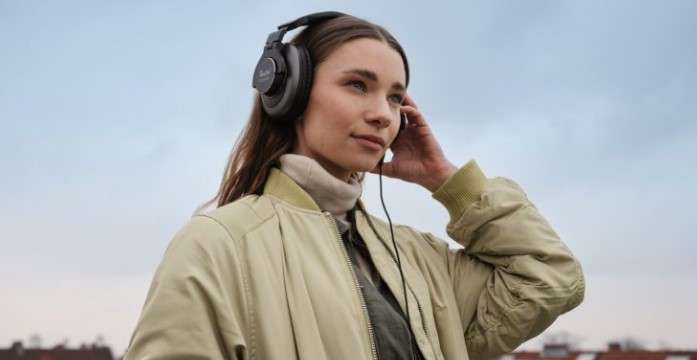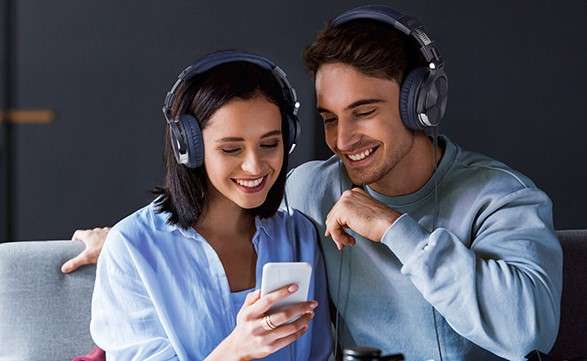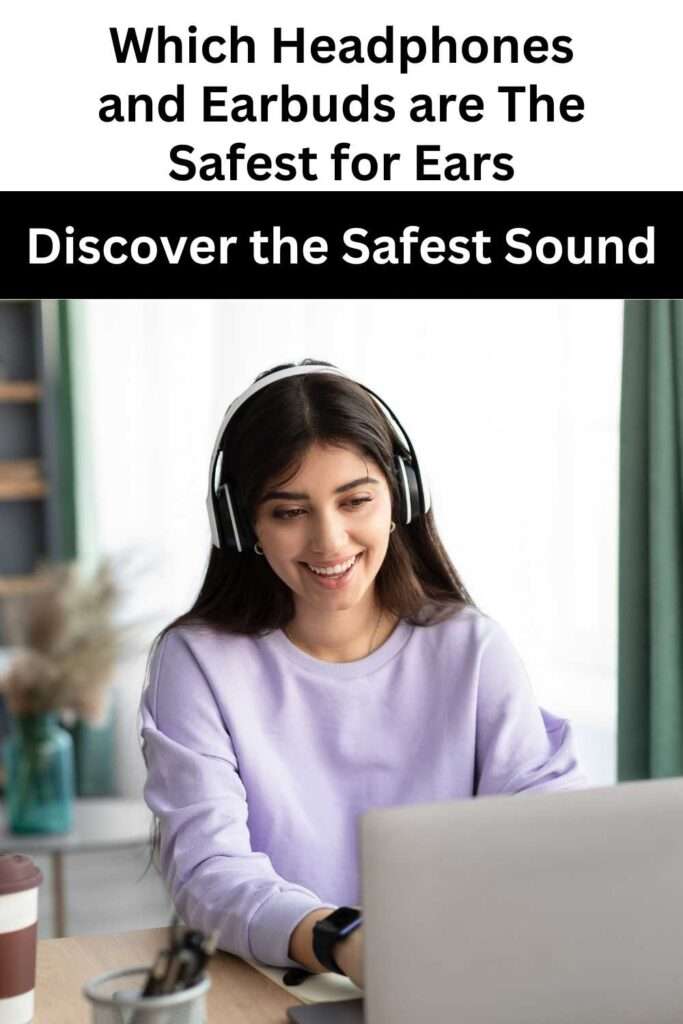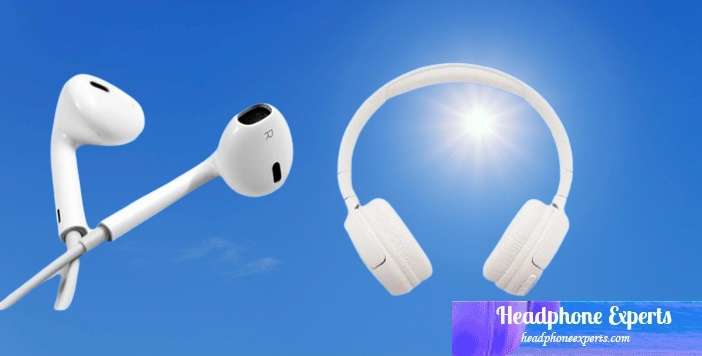Headphones and earbuds have developed into necessities for a variety of activities, including listening to music and making phone calls. However, despite how simple and pleasurable they are, we cannot overlook the effect that they have on our hearing.
It is more important that you select headphones and earbuds that prioritize ear protection in light of the growing popularity of wireless earbuds and the ongoing desire to increase the volume despite warnings to the contrary.
This article will discuss the factors that should be taken into account when purchasing safe headphones and earbuds, provide a rundown of some of the most desirable options now available, and outline some best practices for utilizing these products in a manner that is protective of your hearing.
Whether you listen to music occasionally or are an avid fan, the information contained in this article will assist you in making an educated choice so that you can take pleasure in your listening experience without endangering your hearing.
In this Topic we will cover:-
- Factors to Consider when Choosing Safe Headphones or Earbuds
- Recommended Safe Headphones and Earbuds
- Tips for Using Headphone and Earbuds Safely
Headphones and Earbuds safe for Ears
1. Factors to Consider when Choosing Safe Headphones or Earbuds

When it comes to headphones, there are two main categories: noise isolation and sound cancellation. Noise isolation headphones use passive methods to block out ambient noise, such as creating a tight seal around the ear.
On the other hand, noise-cancelling headphones use active methods, such as the removal of sound waves, to achieve their desired effect. On the other hand, headphones that actively block background noise are referred to as active noise cancelling headphones.
Ear protection from potentially damaging environmental noise can be achieved using either approach; nevertheless, for the best results, it is critical to wear headphones that have a good fit.
The sound pressure level, also known as SPL, indicates how loud the headphones are. A safe sound pressure level (SPL) is believed to be at or below 85 decibels (dB). There are a variety of headphones available on the market today that include volume-limiting circuitry. This prevents the headphones from being turned up to such a high volume that it could result in permanent hearing damage.
The use of headphones must always be performed in a manner that is both secure and comfortable in order to avoid injury.
Headphones that are able to seal up the ear canals or encircle the head tightly will be able to block out more ambient noise and will be less likely to be uncomfortable or painful to the wearer.
There is a possibility that the material used and the quality of the construction both contribute to the safety of headphones. Consider purchasing a pair of headphones that are constructed from long-lasting materials, such as metal or high-quality plastic, and are built to resist heavy use.
There are a variety of headphones on the market that are equipped with volume-limiting circuitry, which prevents the user from turning the volume up to harmful levels.
This is especially essential for young people, as they might not be aware of the dangers connected with listening to music at unsafe levels of volume.
Whether it’s wireless or wired: The difference between wireless headphones and tethered headphones is that wireless headphones use Bluetooth to connect to your smartphone, whereas tethered headphones use a cord.
It is more convenient to use wireless headphones; however, you need to make sure that they have a enough battery life and a reliable wireless connection. This will save you from having to turn up the volume in order to compensate for a weak signal.
2. Recommended Safe Headphones and Earbuds

In-ear monitors, also known as IEMs, are a well-liked option when it comes to selecting secure headphones because of their close fit and high level of noise isolation.
They are designed to fit entirely within the ear canal and create a tight seal, which effectively blocks out any outside noise.
IEMs have a sound pressure level (SPL) that is lower than that of other types of headphones, which helps to protect your ears from exposure to volumes that are too high.
Among the most well-known in-ear monitors (IEMs) are the Shure SE215, the Westone UM Pro 50, and the Klipsch X6i.
Headphones that cover the ears offer superior noise isolation and often have a lower sound pressure level (SPL).
This makes them an additional safe alternative. They should be worn such that they wrap securely around the head and completely envelop the ear.
Over-the-ear headphones are very popular, and some popular models include the Bose QuietComfort 35, Sony WH-1000XM4, and Sennheiser HD 660 S.
Earphones that aren’t tethered to your head Wireless earbuds are an alternative that is both practical and convenient, but they need to have adequate noise isolation and volume control.
Apple AirPods Pro, Jabra Elite 75t, and Sony WF-SP800N are examples of well-known brands and types of wireless earbuds.
The employment of active technology to block out external noise, as found in noise-cancelling headphones, can be beneficial for providing ear protection in areas where there is a lot of background noise.
The Bose QuietComfort 35, the Sony WH-1000XM4, and the Sennheiser HD 660 S are three examples of well-known noise-cancelling headphones.
The headbands and ear cups of children’s headphones are scaled down to fit the dimensions of children’s heads, and these headphones also feature volume-limiting circuitry to prevent children from turning the volume all the way up.
Two of the most well-known models of headphones for children are the Puro BT2200 and the LilGadgets Untangled Pro Wireless Headphones.
Open-back headphones, as opposed to closed-back headphones, have a rear cover that is perforated, allowing air to pass through the ear cups.
This makes listening to music or audio more natural and less taxing on the ears. Because they do not block out as much of the surrounding noise as closed-back headphones do, it is not suggested that you use them in places that have a lot of background noise.
The Sennheiser HD 660 S and the Beyerdynamic DT 990 Pro are two examples of well-known open-back headphones.
All of the aforementioned options are considered to be safe for the ear, but they must be used correctly in order to be effective.
This includes limiting the volume to an acceptable level, pausing your listening sessions at regular intervals, making use of noise-cancelling or isolation features, and properly cleaning and maintaining your earbuds.
3. Tips for Using Headphone and Earbuds Safely

Maintain a low loudness level. In order to safeguard your hearing, the World Health Organization suggests maintaining a volume that is at or below 85 decibels at all times (dB).
A lot of headphones include circuitry that controls the level, so even if you turn it up all the way, it won’t get too loud.
Take regular breaks from listening. Hearing loud sounds for extended periods of time can cause damage to your ears, and this is true even if the volume is turned down to a reasonable level. It is essential to take frequent rests in order to ensure the health of your ears.
Utilize characteristics that suppress noise or block it out completely: Features like as noise cancellation and isolation can assist in blocking out ambient noise, hence reducing the amount of volume adjustment that is required.
Keep your earphones clean and in good working order. Earbuds are susceptible to becoming soiled and obstructed by earwax, which can have a negative impact on both their efficiency and their level of cleanliness.
They should be cleaned frequently with a gentle brush or cloth, and any ear tips that become worn or broken should be replaced.
Always be alert of what is going on around you. Even when you have headphones on, you should still pay attention to your surroundings. When you are in a public location, turn the volume down on your device so that you can still hear what is going on around you.
Even while wireless headphones can be more handy, it is essential to check that they have a long battery life and a robust wireless connection. This will prevent you from having to turn up the volume in order to compensate for a weak signal.
Never go to bed with your headphones or earbuds in your ears. If you turn over while wearing headphones, you run the risk of damaging both the headphones and, more importantly, your ears.
Aware of the degree of sensitivity of your hearing. Because some individuals’ hearing is more sensitive than that of others, it is essential to be aware of the level of sensitivity that your own hearing possesses in order to adjust the volume appropriately.
Take note of how your children utilize their headphones. Because children may not be aware of the risks associated with excessive loudness,
it is essential to monitor how they use headphones and to ensure that they have headphones designed specifically for children that have a volume cap placed on them.
You may help protect your ears and yet enjoy listening to music and other sounds without putting them in danger by following these steps.
Recommended:-
Best Headphone and Earbuds Safe for Your Ears
Conclusion
The proper selection and utilization of headphones and earbuds is essential to the protection of one’s hearing. It is essential to give careful consideration to noise isolation capabilities and volume limiting settings if purchasing headphones or earbuds.
There are many well-liked and risk-free headphone options available, including in-ear monitors, over-ear headphones, wireless earbuds, noise-cancelling headphones, and headphones designed specifically for children.
In addition, it is essential to make responsible use of headphones and earbuds by setting the volume to an appropriate level, taking frequent breaks from listening, utilizing noise-cancelling or isolation features, cleaning and maintaining your earbuds, being aware of your surroundings, and being aware of how sensitive your hearing is.
Following these guidelines will allow you to enjoy listening to music and other forms of audio content without causing damage to your hearing.
Frequently asked questions
How do I know if my headphones are causing damage to my ears?
Ringing in the ears, difficulty hearing at certain frequencies, and a sensation of fullness or pressure in the ears are all symptoms that are associated with hearing loss that is caused by headphones.
If you are experiencing any of these symptoms, you should get your hearing checked out by an audiologist or another hearing practitioner as soon as possible.
Are wired headphones safer than wireless headphones?
There is no evidence to suggest that using wired headphones is any less risky than using wireless ones.
In spite of this, it is extremely important to make responsible use of wireless headphones by ensuring that they have a lengthy battery life and a robust wireless connection.
This will prevent you from having to turn up the volume in order to compensate for a weak signal.
Is it safe to use noise-cancelling headphones for long periods of time?
Even if you are protecting your ears by using headphones that cancel out sounds, continuous exposure to loud noise can still cause damage to your hearing. It is essential to give your ears the opportunity to rest and recoup on a regular basis.
Is it safe to use earbuds?
Even if you are protecting your ears by wearing headphones that block out noises, prolonged exposure to loud noise can still cause damage to your hearing.
This is the case even if you are using headphones to protect your hearing. It is critical to ensure that your ears receive the necessary downtime on a regular basis in order for them to relax and recover.
How do I clean my earbuds?
You can clean your earbuds using a soft brush or cloth. Gently brush or wipe away any dirt or earwax that has collected on the earbuds or ear tips. Avoid using water or any cleaning solutions that are not specifically designed for use with headphones or earbuds.

